How to Make Solid Developer Cubes for Easier Darkroom Film Processing
![]()
Over the past year, it seems the whole world has been on hold due to the rampages of COVID-19. In the Facebook groups I’m in, many users were seeing shortages in analog photography supplies. Some online stores stopped shipping Rodinal (a caustic liquid) and other products were just nowhere to be found.
I myself like the pyro developers made by Jay DeFehr, 510 Pyro and Obsidian Aqua. The 510 Pyro is a thick liquid that you just add to water and go, but it uses very toxic pyrogallic acid. Obsidian Aqua uses less toxic pyrocatechol but needs to be made with a part A and part B mix. Both formulas are top drawer and have a good shelf life.
My “wants” in a formula: highly concentrated, good tonal range, fine grain, multi-film-brand compatibility, economical, long shelf life, ease of storage, and easy to ship to a friend.
Storing liquid developers is a hassle — one that usually entails amber glass bottles or wine bladders, accordion bottles, etc. Shipping liquid developers is more of a hassle. The weight of the liquid jacks up the shipping cost and then there are worries about leakage. There has never really been a solid developer. If only I could make a developer “pill”… Hmmm…
One of my chem suppliers is a site that primarily sells to home soap and cosmetic makers. They had a tip on their site that if you are making soft soap use potassium hydroxide with TEA (triethanolamine) and if you want hard soap use sodium hydroxide with the TEA. I was going to use TEA as the suspension carrier (like 510 Pyro) and sodium hydroxide as the accelerant in the mix (it’s a common component in a lot of developer mixes like Rodinal). I just had to combine the ingredients in the right proportions to make a Frankenstein cross between developer and bar soap. And that creation I call PyroButter.
Disclaimer: Working with chemicals can be hazardous to your health in all kinds of ways. Please know what you’re doing and proceed at your own risk!
PyroButter Cubes
Ingredients
- 150ml triethanolamine (TEA)
- 75g pyrocatechol
- 1g phenidone
- 10g ascorbic acid
- 5g glycin
- 40g sodium sulfite
- 2g potassium bromide
Warning: It has come to my attention that some less-than-honest Internet sellers are selling “low freeze grade” TEA as the more desirable pure version. Normally, TEA freezes at 72-74°F (~22-23°C). It takes on a semi-solid “pudding” consistency. The low freeze grade is made with 15% water. The end effect of this is that your cubes may not go solid AND you may experience a less than stellar shelf life. Other photographers have noticed other mixes made with TEA like 510 Pyro not lasting as they would expect.
Instructions
In a Pyrex-type bakeware measuring cup: heat the TEA to near boiling (warning: it’s a potential scalding hazard if your glassware breaks). Microwave on high for 2 minutes.
Mix all of the above into the superheated TEA while stirring with a stout spoon. I would recommend under a vented range hood with a fan or out on a patio—away from your face. Fumes are not conducive to respiratory health. Goggles/gloves or full face guard advised.
If you want the “soft soap” easier-to-spoon version, add 50g potassium hydroxide and add it slooowly to the hot liquid — sprinkle small amounts while stirring. If it’s not dissolving all the way, pop it back in the microwave for another minute—stir to completely dissolve. If you want the harder bar soap version use 50g of sodium hydroxide with the same cautionary of slooow sprinkles while stirring.
Allow to cool just a bit and pour into a clean dry mason jar (used for canning fruits and such). Allow to cool more and you’ll have what looks like a jar of earwax.
![]()
Simply stick in a paring knife or spoon tip and weigh out a gram… Oh wait, that’s a bit inconvenient, isn’t it? What if you are sending some to a friend and they don’t have a scale? Do you see it as a hassle to break out a scale every time you want to do a roll? This takes us back to my earlier thought of a simple “pill” all uniform and ready to drop in…
I found some nifty silicone mini-cube ice cube trays on Amazon. 160 little cubes. The silicone makes them heat resistant and easily flexed to pop out the contents. Lay down some paper towels or newsprint and pour the hot mix in and then level it with a butter knife as we see in this next photo:
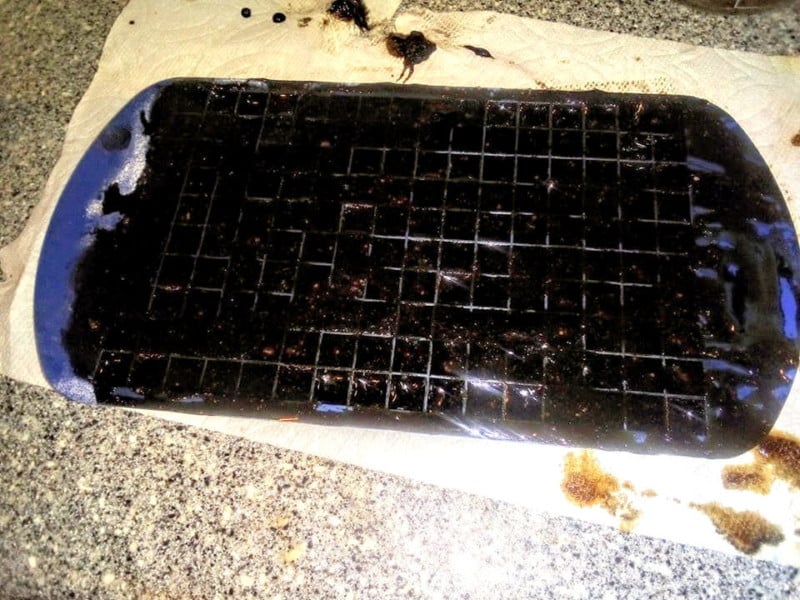
I set this in the freezer for a couple of hours to totally get cold and flex the tray a row at a time to pop out the cubes. The cubes are a little tacky, like fudge, so I put a little sodium sulfite in a plastic bowl and roll the cubes for a no-stick dusting and we end up with nice uniform cubes that weigh in at 1.5g each:

Will it work? Let’s see what a sample looks like from T-max expired in 2005. This is the owner of my favorite thrift store in Tucson. 1 cube 1 hour semi-stand (10 sec agitations every 10 mins) 300ml single reel tank. Stir cube to dissolve and away you go with fresh developer every roll.
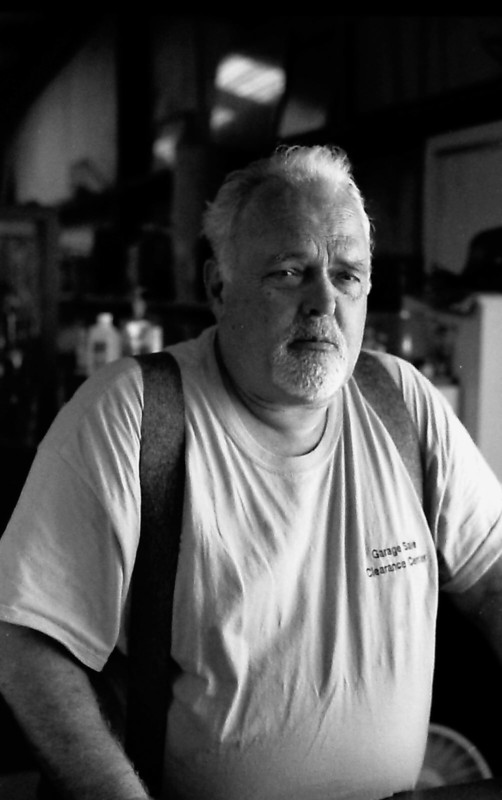
I shoot a lot of expired film—how about old Mikrat 200 Soviet film expired in 1978? Same 1 cube in 300ml water 1 hour semi-stand.
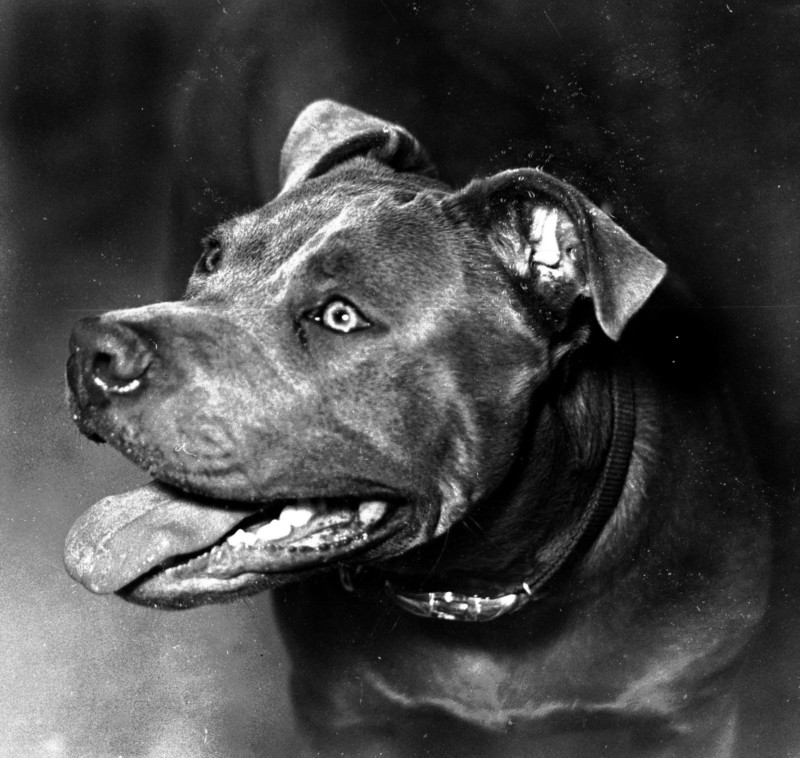
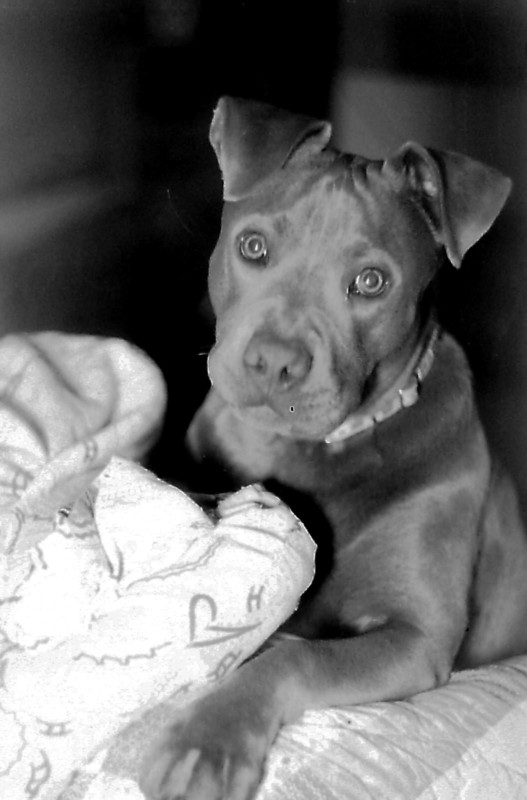
What about fresh film? Here is some Ultrafine 400. Same 1 cube 1 hour.

My friend, Ukrainian photographer Ihor Chykalo, shot these photos on expired Tri-X 120 and developed them with PyroButter cubes:


I have torture tested the PyroButter cubes by leaving them in a ventilated glass jar in the Tucson, Arizona, sun for 6 months. The cube still worked. As a control, I put 5ml of Rodinal in a small glass jar in the sun for a week and then 1 hour semi-stand. Here are the side-by-side results:
![]()
The negative on the left was developed with the Rodinal left in the sun for a week. The negative on the right is from the same roll of film developed in the cube of PyroButter left in the sun for 6 months.
MHP Butter Cubes
What if you don’t like Pyro-based developers? You can also make MHP (Metol, Hydroquinone, Phenidone) Butter cubes.
Ingredients
- 250ml TEA (triethanolamine)
- 35g metol
- 25g hydroquinone
- 1g phenidone
- 10g ascorbic acid
- 10g borax
- 50g sodium sulfite
- 50g sodium hydroxide
- 2g potassium bromide
Instructions
Place 250ml of TEA (triethanolamine) in a Pyrex type cup and heat on high heat in a microwave for 2 minutes. Wear gloves and be wary that you do not crack your vessel as this stuff is a sticky scalding hazard.
Add the above while stirring — be sure to add sodium hydroxide veeery slowly while stirring to the hot TEA.
If the ingredients don’t dissolve readily, reheat in the microwave for 1 more minute. Stir.
This makes 2 trays of cubes (320 rolls). I find this mix to not be quite as solid as the PyroButter and best kept refrigerated.
1 cube 1 hour expired Tri-X.

Some expired Mikrat 200 1 cube 1 hour.
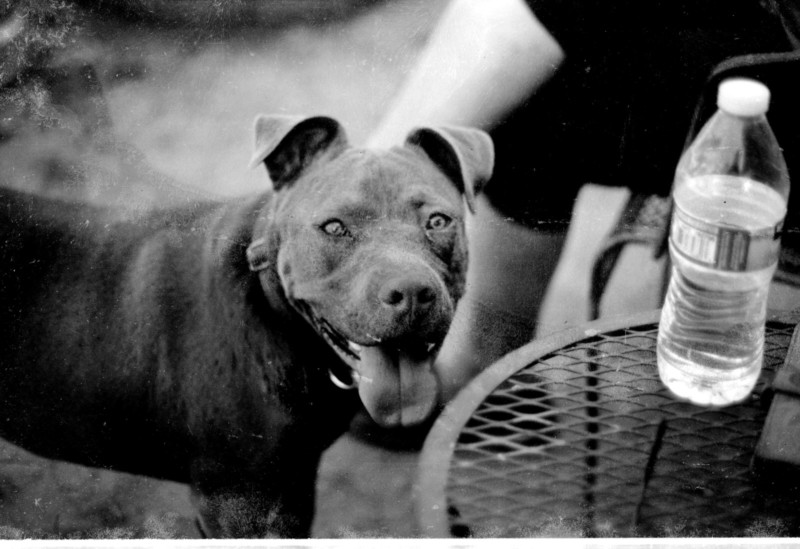
The thrust of these mixes is to provide a consistent concentrated 1 part solid developer mix. Enough developer to process 320 rolls fits in a small jar. The shelf life should be decades. It’s not a liquid so it’s easily shipped to a friend. 1 1.5g cube processes a roll of film. Just add to 300ml water and stir to dissolve. 1 hour semi-stand for most films, although one should always verify to your tastes and outcomes. Photography is subjective.
Cost analysis puts this at about 3 cents a roll for what I pay for supplies in the United States.
About the author: Daniel Keating is a photographer based in Tucson, Arizona. The opinions expressed in this article are solely those of the author. Keating is a former technical support rep for Noritsu America Corp (1999-2004) and prior to that, he managed numerous photo labs from 1978-1999. You can find more of Keating’s work on his Facebook and Flickr.
Image credits: Header photographs by Daniel Keating (left) and Ihor Chykalo (right).